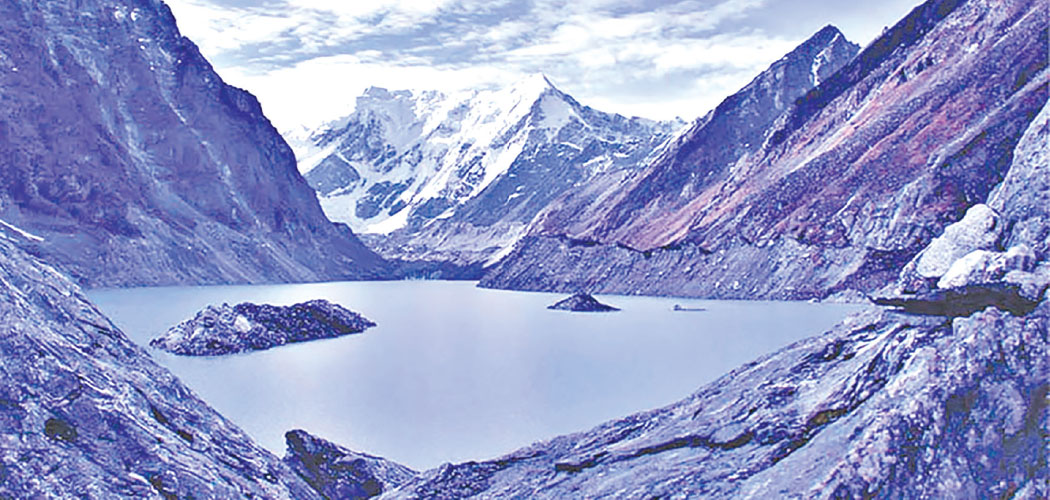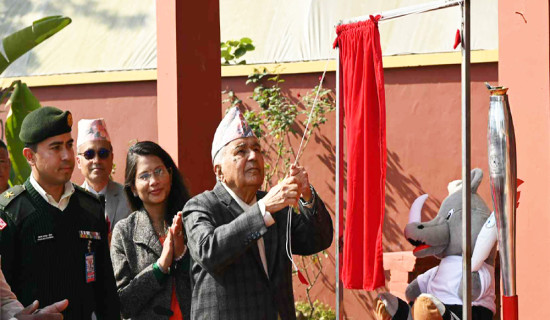- Friday, 19 December 2025
Record-low snow persistence poses water shortage risk: ICIMOD
By A Staff Reporter,Kathmandu, Apr. 19: The Hindu Kush Himalaya (HKH) region experienced its third consecutive below-normal snow year in 2025, with snow persistence -- the fraction of time snow is on the ground after snowfall–hitting a vicennial record low of - 23.6 per cent, according to the latest Snow Update Report.
Launching the 2025 Snow Update report, Pema Gyamtsho, ICIMOD’s Director General, emphasised the need for proactive policy actions in building long-term resilience to exacerbating snow anomalies: “Carbon emissions have already locked in an irreversible course of recurrent snow anomalies in the HKH.”
“To tackle this regional snow crisis and the challenges it creates for long-term food, water and energy resilience, we urgently need to embrace a paradigm shift toward science-based, forward-looking policies and foster renewed regional cooperation for transboundary water management and emissions mitigation,” he said.
On average, seasonal snowmelt contributes about a fourth of the total annual runoff of these rivers, with the share gradually rising from the rivers in the east to those in the west of the region. Despite such basin-wise differences in the dependency on seasonal snowmelt, continued deficit of seasonal meltwater, in general, means lesser river runoffs and early-summer water stress, especially for downstream communities, already reeling under premature and intensifying heat spells across the region, said the ICIMOD.
According to Sher Muhammad, Remote Sensing Specialist at ICIMOD and the lead expert for Snow report 2025, “We are observing such deficit situations occurring in continuous succession. This is an alarming trend. While our findings give broad picture across the region, each must act based on the specific conditions of their river basins, particularly where seasonal snow melt is the major water source.”
While the level of deficit in snow persistence in the western river basins, this year, has been less compared to the last year, it provides no respite from the existing water stress in these areas. Seasonal snowmelt is critical for water supply in these basins. So, persisting below-normal snowfall and reduced melt rate will only worsen water availability.
On the other hand, the eastern river basins, which experienced near-normal snow persistence last year, face deficits up to 50 per cent below normal. Although seasonal snow contributes less to total meltwater here, around 15 per cent drop in the persistence of seasonal snow could still impact downstream communities, especially in the mountains and Tibetan Plateau, where annual snow conditions are generally erratic, said a press statement issued by ICIMOD on Friday.
The report reveals the most alarming declines in snow persistence in the Mekong (-51.9%) and Salween (-48.3%) basins, followed by the Tibetan Plateau (-29.1%), the Brahmaputra (-27.9%), Yangtze (-26.3%), and the Ganges (-24.1%) basins. This is worrying news for the water security of nearly two billion people across 12 major river basins that originate high in the HKH, the report said.





-square-thumb.jpg)










